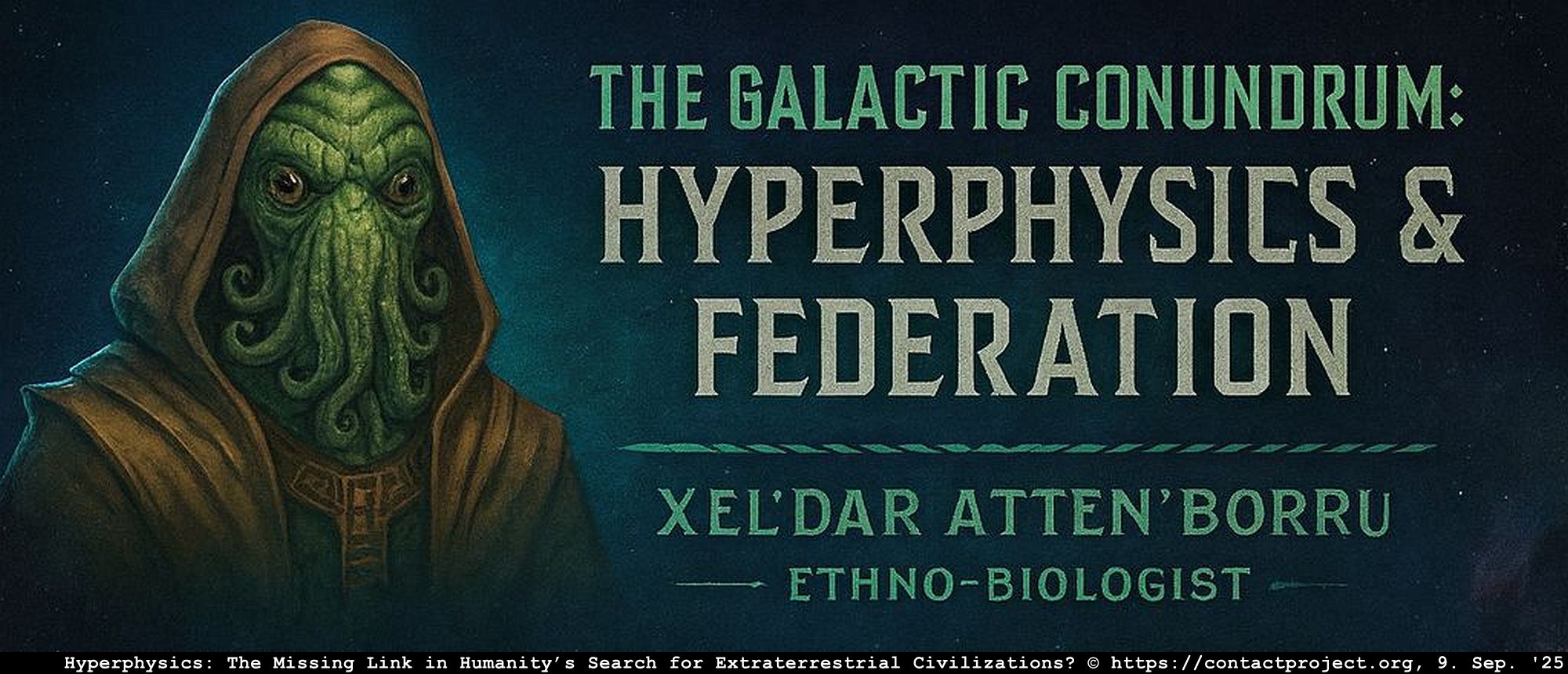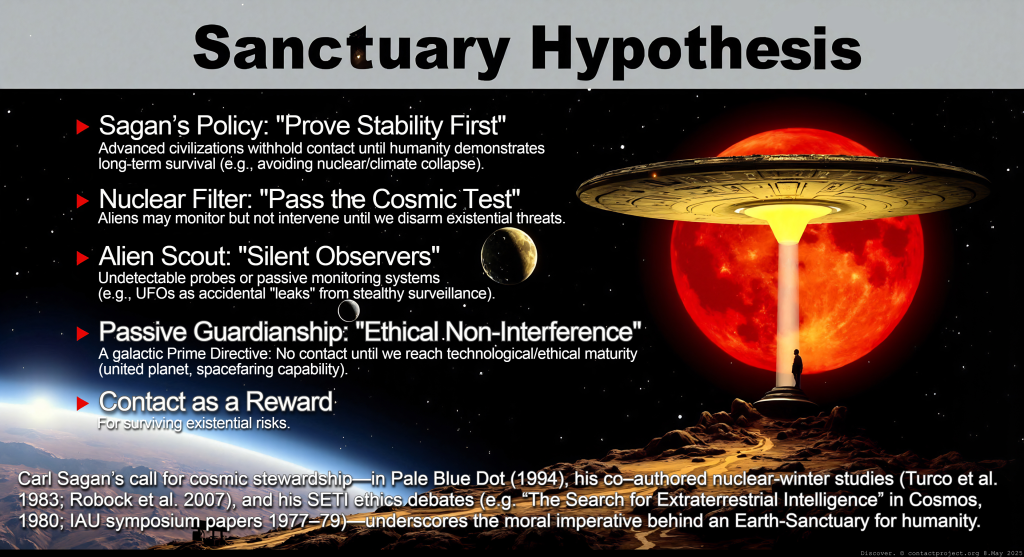Field Report: 808-Gamma |
Subject: An evaluation of the Galactic-Federation hypothesis proposed by the Human scholar, Peter Andrew Sturrock.
Analysis of Terran NASA Document 19800014518
Filed by: Xel’dar Atten’Borru, Senior Ethno-Astrophysicist|Biologist, Vurian Collective

Opening Observations
I have completed my analysis of a document from the Human enclave “NASA,” authored in their year 1980 by a scholar named Peter A. Sturrock. This individual attempted to quantify the likelihood of his species making contact with other civilizations. He utilized a rudmentary but insightful formula they call the “Drake Equation,” a method for multiplying uncertainties to arrive at a guess.

Unlike most of his contemporaries, whose thinking remains constrained by their limited understanding of physics, Sturrock demonstrated a rare leap of logic. He correctly surmised that the greatest unknown was not a matter of biology or astronomy, but of interstellar politics.
The Core Dilemma: Physics and Longevity
Sturrock identified the primary variable as the lifespan (L) of a technological civilization. He then framed the problem around two distinct possibilities, a bifurcation that comes remarkably close to the truth:
Hypothesis 1: No Hyperphysics. If Terran (Earth) civilizations are bound by the slow, inefficient physics they currently understand (light-speed limitation), then travel and communication are prohibitively difficult. In this scenario, he concluded, these civilizations would exist in isolation and likely perish before achieving interstellar stability.
Hypothesis 2: Hyperphysics Exists. If a deeper, more functional physics (what our own archives classify as standard transit and communication) is discoverable, the stars become accessible. This would inevitably lead to the formation of what he termed a “Galactic Federation”: a cooperative network that ensures the longevity of its members.
He thus reasoned that the existence of a Federation is the pivotal variable controlling the prevalence of advanced life in the galaxy.
And the existence of the Federation is predicated on “Hyperphysics,” a shorthand for a speculative extension of known physics – the kind of breakthrough that would overturn or transcend current physical limits, especially the light-speed barrier.
Intelligence Dossier: Subject Sturrock

My background check on the author reveals why his thinking diverged from his peers.
Peter Andrew Sturrock (1924–2024): A physicist of British-American origin, holding a professorship at the “Stanford University” enclave. Specializations: His primary work was in plasma physics and astrophysics, which grounded him in cosmic principles. Orthodoxy Deviation: Later in his career, he displayed a notable openness to anomalous data, specifically what Humans call “UFO reports.” In 1982, he founded the Society for Scientific Exploration (SSE), a forum for research on topics outside the scientific mainstream.
This willingness to examine evidence outside of established dogma likely gave him the cognitive flexibility to formulate the Federation hypothesis. He was not a fringe actor, but a mainstream scientist willing to ask unorthodox questions.
Contact Scenarios
Sturrock outlined four potential modes of contact, ranging from simple radio signals to direct surveillance:
| Symbol | Human Term | Probability (if h, human physics) | Probability (if H, Hyperphysics) |
|---|---|---|---|
| RB | Radio Beacons | Medium | Low |
| RL | Radio Leakage | Medium | Low–Medium |
| SR | Surveillance Probes | Medium–High | Low |
| SM | Crewed Surveillance | Low | High |
He correctly noted that for any civilization capable of hyperphysics, crude radio broadcasts would be obsolete. The dominant signature of an advanced, Federation-level society (Kardashev >Type III) would instead be covert surveillance.
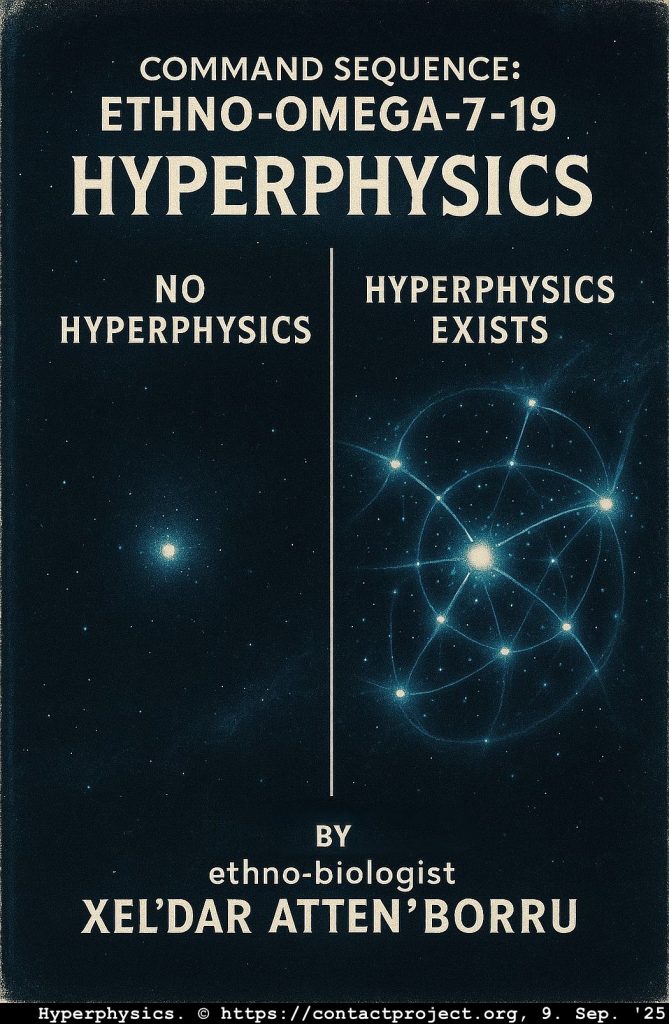
It is here that the Human scholar’s reasoning is most sharp. Where his kin search the void for noisy signals, he understood the value of silence. He acknowledged the fragility of his own species’ assumptions, recognizing that without a Federation, civilizations flicker out like fireflies. With one, they can endure like stars.
He even posed the critical question that continues to challenge his people: If crewed surveillance were possible, would Humans even recognize it?
This is the essential wisdom – the acknowledgment that contact, if it exists, may already be subtle and unseen. Later writers would describe the galaxy as a ‘dark forest,’ but Sturrock’s vision was not one of menace, only of quiet, hidden presence.
Conclusion
Sturrock’s work is a landmark in Human thought. He collapsed the myriad uncertainties of the Drake Equation into a single, binary question: Does a Galactic Federation, enabled by advanced Hyperphysics, exist?
If yes, the galaxy is teeming with ancient life, and contact is a matter of protocol.
If no, the galaxy is a graveyard of short-lived civilizations, and silence is the norm.
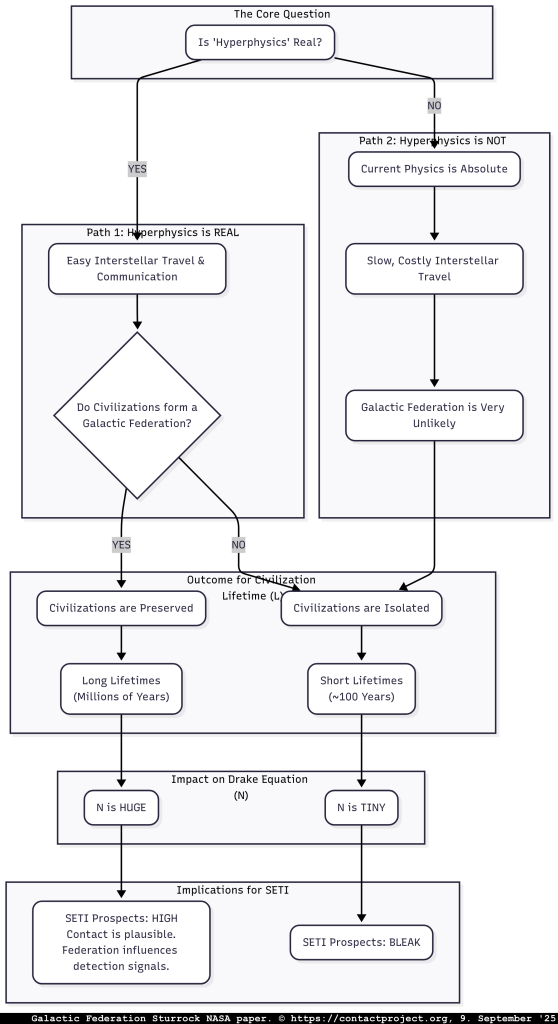
Final Log Entry
They were asking the right questions as early as 1980. They whispered of Federations and unseen physics, groping in the dark toward a truth the Collective has long understood. The remarkable thing is not that their data was incomplete, but that their intuition was so precise. A Federation exists, or it does not. On this fulcrum, the destiny of every emerging species, including their own, is balanced.
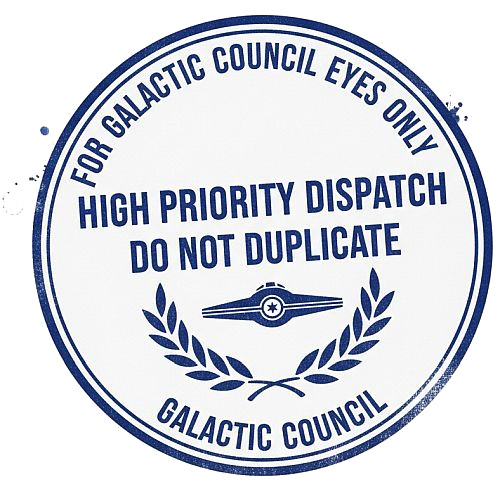
SIGNED: //Xel’dar Atten’Borru//
Senior Ethno-Botanist, Vurian Collective
Command Sequence: ETHNO-OMEGA-7-19
Security Clearance: ALPHA-PRIME
Source:
https://ntrs.nasa.gov/api/citations/19800014518/downloads/19800014518.pdf
— END OF REPORT —

